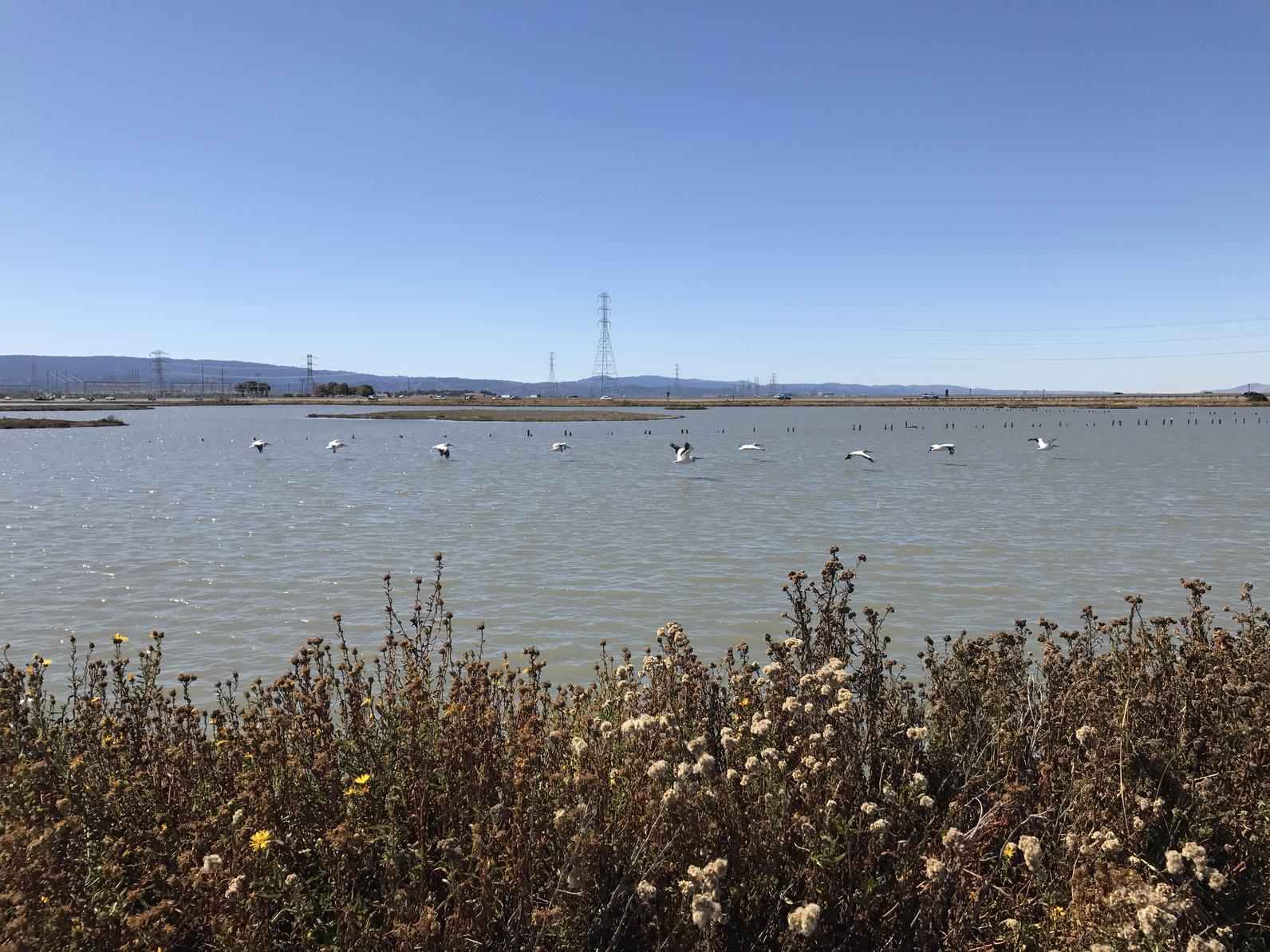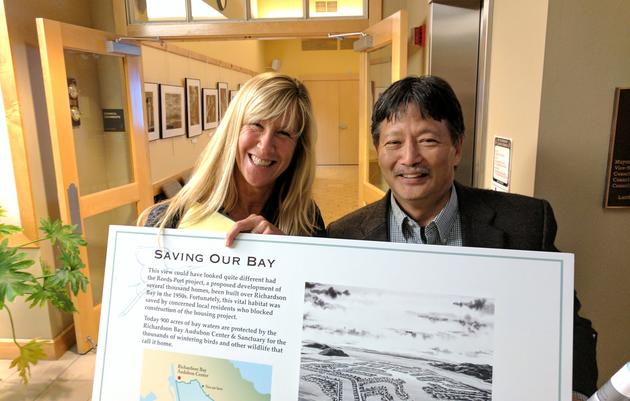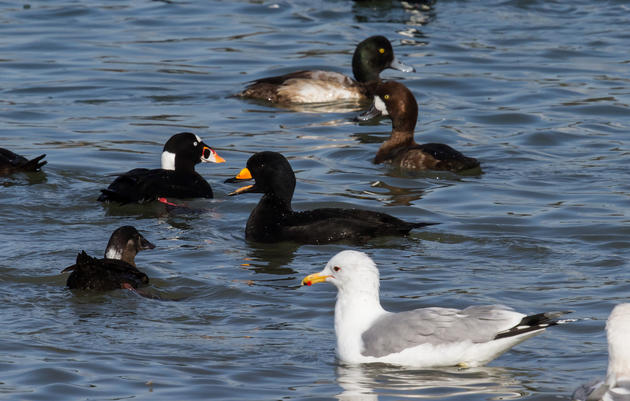The birds of the Pacific Flyway depend on a diverse chain of habitats, from Arctic tundra and northwestern rainforest to tropical beaches and mangroves. The San Francisco Bay is one of the largest coastal estuaries on the West Coast which along with its tidal wetlands are key to this chain of critical habitats for migratory birds and other wildlife.
San Francisco Bay is home to multiple Important Bird Areas (IBA’s), including two new IBA’s designated in 2015. These two IBA’s – San Pablo Bay Wetlands and San Francisco Bay – South, along with Richardson Bay are the only open-bay (subtidal) IBA’s within San Francisco Bay. Waterbird monitoring, one of the tools utilized by Audubon California’s San Francisco Bay Program, provides insight to changing conditions and helps prioritize conservation actions. Analysis of waterbird surveys and other data helped Audubon California make their case in the nomination of these two new IBA’s.
The San Francisco Bay—South IBA is home to the largest tidal wetland restoration project on the West Coast. It will restore 15,100 acres of industrial salt ponds to tidal wetlands and other habitat. Audubon supporters recently visited the South Bay Salt Pond Restoration Project with Nils Warnock, Executive Director of Audubon Alaska and John Takekawa, San Francisco Bay Program Director for Audubon California, both who served on the science team of the restoration project. Projects like this aim to reverse a trend of dramatic decline of tidal marsh habitat; it is estimated that San Francisco Bay has lost over 85 percent of its historic wetlands. This loss not only impacts certain birds and other wildlife but increases flood risk and affects water quality. However, restoration has trade-offs since these current salt ponds also provide critical habitat to a number of species.

We started the day at the Don Edwards Wildlife Refuge, where John talked about the history of the restoration site we’d be visiting and its transition from industrial salt production to a mix of habitats that includes mudflats, wetlands and tidal marsh. Nils shared the importance of these sites as fueling stops for birds along the flyway, explaining how having a mosaic of habitats and the tidal changes allow for a diverse variety of birds to get their fill of fish and invertebrates—for example, in the spring Western Sandpipers stop here for about a week, fuel up, and fly on to Alaska. We spotted some warblers, a Great Blue Heron, egrets and Mallard Ducks, Northern Pintail other waterfowl and after lunch headed over the Dumbarton Bridge to the Ravenswood 2 pond restoration site.
As we reached the pond, we were greeted by several kinds of terns –Forster’s, Elegant, and Caspian- hovering and diving for fish at the edge of the pond. Through our binoculars we spotted Marbled Godwits and Willits on islands in the pond. As we talked about the difference in distinguishing marks between birds, field guides were referenced and checked. Soon enough Nils was drawing a map in the sand as he shared with us the migration stories of the Arctic Tern, which has the longest overall migration in distance, and the Bar-Tailed Godwit which breeds in Alaska and then flies over 7000 miles non-stop to New Zealand where it spends the winter. Neither of these birds were at this site, but plenty of other birds that do amazing migrations were.
As we walked further along the pond we spotted Black Skimmers resting on an island with large groups of Marbled Godwits, American Avocets, and Forster’s and Elegant Terns nearby. Along the way we learned more about the restoration project and some history of the movement to restore the bay. With the help of Congressman Don Edwards, the Citizen’s Committee to Compete the Refuge, a dedicated community of advocates worked through the 1960’s,70’s and 80’s to protect the bay’s remaining wetlands as a National Wildlife Refuge. More recently, the San Francisco Bay Restoration Authority was created in 2008 by the California State Legislature for the purposes of “raising and allocating local resources for the restoration, enhancement, protection, and enjoyment of wetlands and wildlife habitat in San Francisco Bay and along its shoreline. In 2016 voters passed Measure AA, a 20-year $12 parcel tax that will raise approximately $25 million annually for these purposes. Audubon California and eight California Audubon chapters supported Measure AA by organizing phone banks, hosting events and leading field trips to local wetlands.
Meanwhile American White Pelicans and Forster’s Terns were fishing in the open water. We were treated to some fabulous displays of bird behavior as we noticed some action overhead. A tern had caught a fish and another tern was battling for it. As they looped around each other, a California Gull got in on the action, chasing the Terns round and round in an effort to force it to drop the fish. This display of kleptoparasitism ended with the tern losing its fish. Before wrapping up our trip we witnessed fabulous murmurations of terns, godwits and willets as they scattered from their resting spots, likely spooked by a Peregrine Falcon.
For more information and to visit these sites on your own, please visit:
Don Edwards Wildlife Refuge
Ravenswood Open Space Preserve
Read more about Audubon California’s work in San Francisco Bay and restoration projects:
Sonoma Creek Restoration Project
Aramburu Island Restoration
Conservation at Richardson Bay
San Francisco Bay










